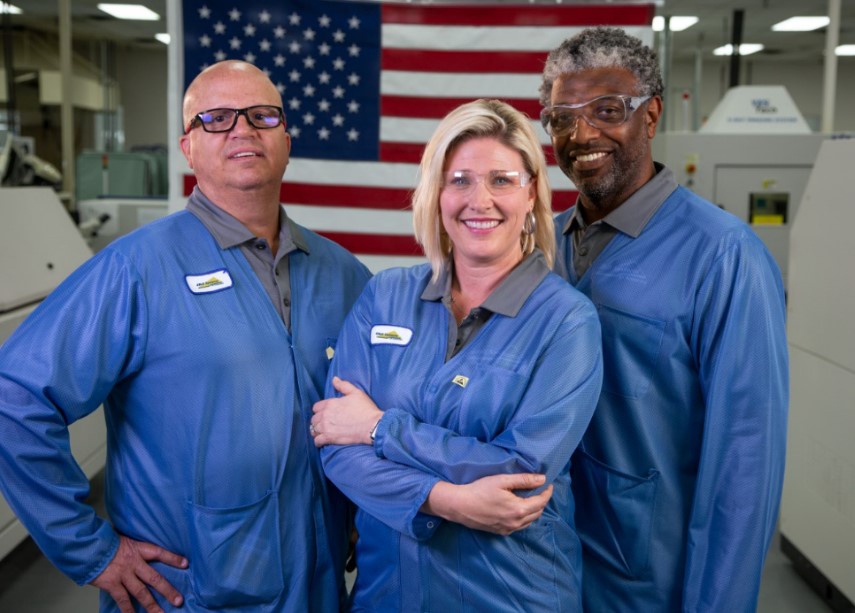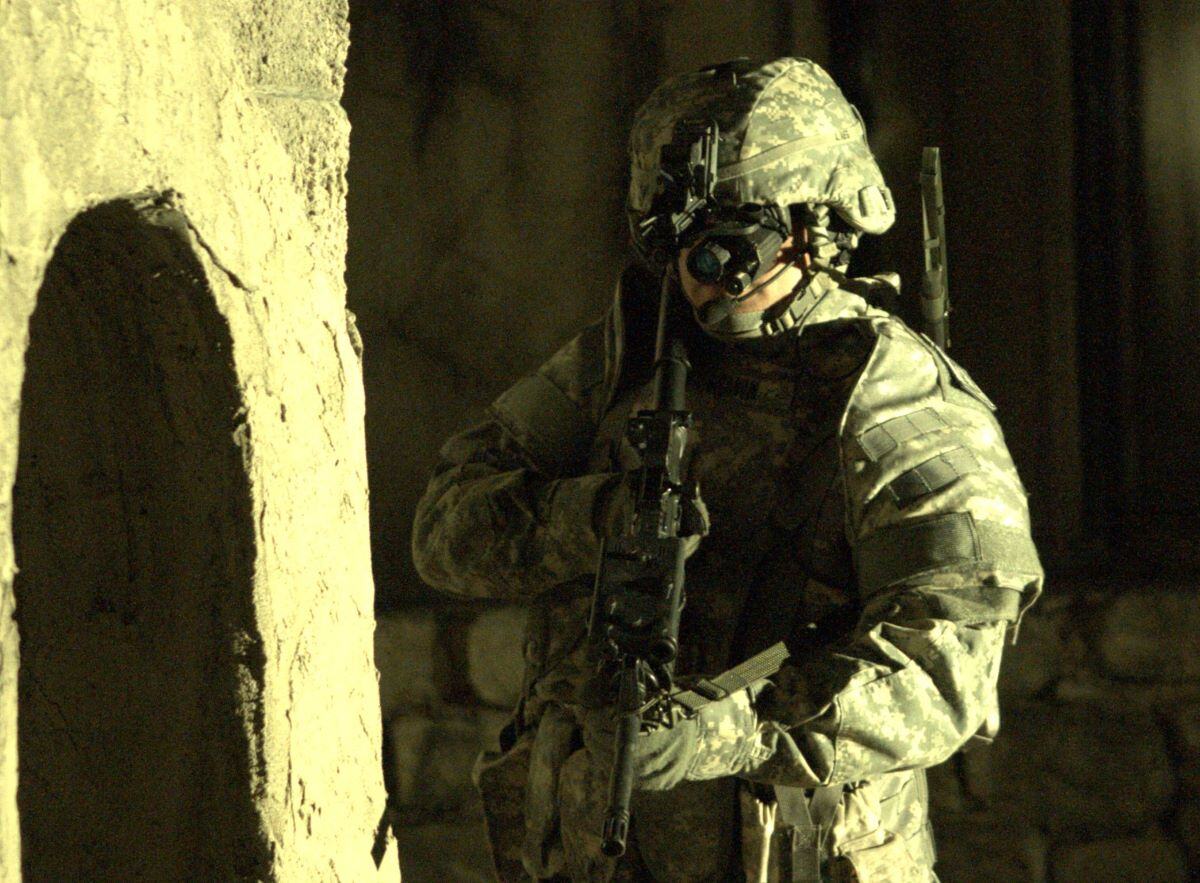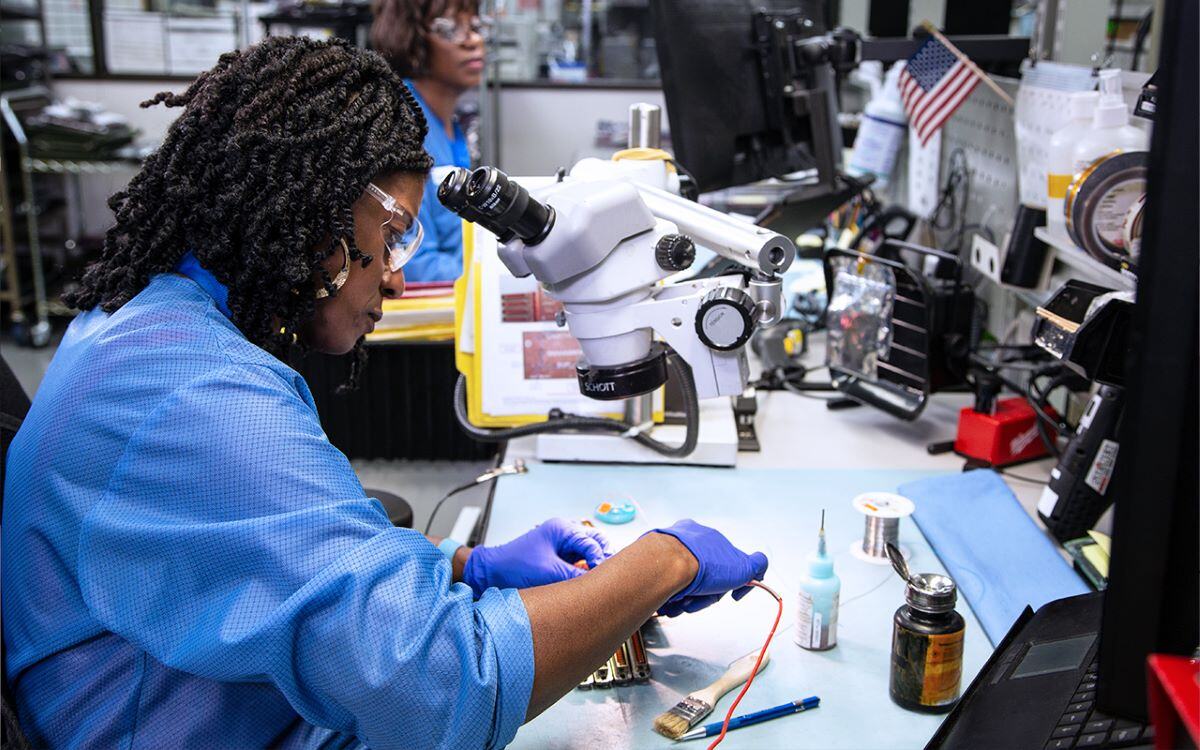This article originally appeared in the Oct/Nov 2020 issue of RotorHub magazine. Reprinted here with permission.
Being able to see in the dark has revolutionised the way helicopters are operated. Emma Kelly talks to some of the companies that provide night vision technology about developments in the field.
Night vision goggles (NVGs) are no longer for the exclusive benefit of military operators, with their use expanding over the last couple of decades into parapublic and commercial helicopter applications.
The technology is now well established in law enforcement, helicopter emergency medical response, and search and rescue, with more of these operators equipped than not. NVGs are bringing clear benefits to these sectors, both expanding the operational window and delivering significant safety improvements. Several new applications for night vision systems have also emerged in recent years, for missions such as aerial agriculture, bushfire monitoring and suppression, and even wildlife and poacher tracking.
Industry experts
As the night vision market has grown, suppliers have developed into one-stopshop NVG specialists, offering a whole suite of services, including sales, maintenance and repair, in addition to training and securing the necessary approvals.
Gains from the ongoing development of legacy goggles from Elbit Systems of America – Night Vision and L3Harris for military customers will eventually work their way down to parapublic and civil operators. Civil customers of Elbit’s F4949 NVGs, for example, will continue to benefit from developments for the military. At the same time, the manufacturer is exploring how its technology can help additional operators involved in different types of mission. Elbit has fielded approximately 75,000 of its F4949 aviation systems worldwide.
“Elbit Systems of America – Night Vision is always looking at adjacent markets and how our core expertise can service those requirements,” says Darrell Hackler, its senior director of sales and marketing. “We have multiple ongoing technology development efforts in the area of sensors, NVGs and augmented reality via connected systems and sensors,” Hackler reports. “The civil aviation market will benefit from this increased capability development in support of the US Department of Defense.”
Operators in the future will be equipped with next-generation aviation binoculars which are lighter and have an improved centre of gravity to address usability and pilot fatigue, he predicts.
In addition, the next generation of goggles will have upgrade paths, allowing the inclusion of intrinsic full-colour displays to support true head-up display (HUD) functionality and symbology overlay. Elbit’s experience with sensor fusion product development in support of the US Army, fusing different sensors and capabilities into the NVGs for improved situational awareness, could particularly benefit operators involved in aerial firefighting and monitoring, Hackler suggests.
While many parapublic and commercial operators continue to rely on the military developed technology from Elbit and L3Harris, several innovative companies have come up with their own lighter-weight solutions for the growing non-military user base.
Weight advantage
One such company is US night vision specialist Aviation Specialties Unlimited (ASU), which is a one-stop shop providing NVG sales, maintenance and training. ASU’s aviation NVG solution, the Element 3 (E3), is currently in its development phase, with production expected to start in mid-2021. The transition to production has been delayed by the COVID-19 pandemic and subsequent economic slowdown, says Chad St Francis, ASU’s director of military programmes.
According to St Francis, the E3 will be the lightest aviation NVG product in the market, and he emphasises that the weight reduction has been achieved without sacrificing performance. It will be incorporated with ASU’s AERONOX mount and battery combination, which has already received TSO certification from the FAA, and which is ruggedised and lighter in weight than legacy packs.
“The E3 is a novel approach to modifying existing 18 mm image tubes into a lightweight housing. This approach will save 200 g of weight compared to the current fielded ANVIS systems,” explains St Francis. “The E3 is easier to maintain, and scheduled maintenance will be less time-consuming as the unit is permanently collimated by the factory.”
As well as being lighter, easing pressure on the user’s neck and head, the design also has a higher tolerance and resistance to electromagnetic interference.
“The market has been very receptive to our design, and it has been tested by both commercial and military operators,” he notes, with the low weight and ease of use particularly welcomed. It’s clear what customers are seeking when it comes to NVGs, says St Francis. “Operators are looking for the best performing and most reliable NVG systems in the market today. Utilising the best night vision systems ensures that the most important asset to an operation, hands down, is human safety. Hardware is replaceable,” he stresses.
“Human factors are also of importance as we strive for longevity for aircrews. Lighter systems bring less back and neck issues to those individuals who fly hundreds of NVG hours each year,” he explains. “Light weight is a big request from the community, and we are looking to improve that dramatically.”
ASU distributes the L3Harris M949 AN/AVS-9 exclusively for the US domestic market, as well as being the only L3Harris FAA Part 145 operation certified by the OEM to conduct maintenance and repairs. It also distributes Elbit’s M4949 internationally, as well as providing scheduled maintenance and repairs.
Daniel Burnham, director of sales and business development for ASU, estimates that the company has sold more than 7,000 AVS-9 systems over the last 25 years. That’s a conservative estimate, he points out.
“We have well over 20,000 total NVGs sold worldwide.” In addition to law enforcement, EMS and SAR operations, ASU has seen more recent growth in NVG adoption for agriculture and aerial firefighting. “We recently sold 15 high-performance white phosphor goggles to Cal Fire [California Department of Forestry and Fire Protection],” reports Burnham. ASU also provides custom aircraft lighting solutions for night vision operations. It has completed cockpit lighting modifications on more than 2,000 aircraft worldwide.
Many of ASU’s customers opt for training from the company when launching new NVG programmes. “We offer custom-tailored courses for mission-specific needs, including military applications, air medical, search and rescue, high-altitude/mountain operations and aerial application for agricultural operations,” Burnham says.
Record holder
Australia’s Point Trading is another company that has developed its own aviation NVG product, Night Eyes. The goggles were designed and are manufactured in Melbourne, while the image intensifier tubes come from Europe, meaning the product is not affected by US International Traffic in Arms Regulations (ITAR) controls.
Night Eyes has a modular, lightweight and ruggedised design, with a total weight of between 550 g and 600 g, depending on configuration. Its image intensifier tubes have a figure-of-merit performance range that extends up to 2,400 plus. Green and white phosphor versions are available. The ergonomic design, with an extended foldback position over the helmet, provides a reduction in neck stress.
“One of the main differences [from other NVGs] is our world-patented technology that records operational use of the goggles – an inbuilt pilot logbook and service records,” explains Paul Prince, Point Trading’s senior business development manager.
“Our helmet mount is the lightest in the world at 120 g, with a full safety breakaway mechanism. Our night vision is modular, so it can easily be upgraded.”
Point Trading also offers the clip-on Galago head-up display designed for night vision operations, allowing waypoints and points of interest to be shown.
In the civil rotary-wing sector, Prince estimates that the company currently has more than 200 systems in operation, while in the military and law enforcement markets, this figure is in the thousands, with the Australian Defence Force being a long-term customer.
Night Eyes has been successfully trialled by Kestrel Aviation in Australia’s pioneering aerial firefighting missions using NVGs (as noted in the sidebar on this page), with glowing references from the operator. Also in Australia, Becker Helicopters, Rotor-Lift Aviation and Heliwest all use Night Eyes and provide training for other operators.
A growing market for Point Trading is South Africa. “We sell many units to South Africa for anti-poaching and wildlife safaris,” Prince reveals.
Texas-based Night Flight Concepts (NFC), which was established in 2006 by former US Army aviators, is another onestop-shop provider, but it has not gone down the path of developing its own night vision goggles.
“The technology has been around a long time. Big companies have much larger engineering and development capabilities,” says NFC’s president, Adam Aldous.
Aldous notes that the existing systems have benefited from millions of dollars of investment for the military. In the area of light amplification in particular, a company like NFC could not achieve a better result than the current manufacturers, he believes.
“We’ll see other companies make slight improvements – lighter, more compact solutions, for example. We could go down that path,” says Aldous, although NFC has no plans to do so.
Proven product
NFC intends to stick to what it is good at – sales, maintenance and training. On the sales side, it markets Elbit’s AN/AVS-9 (F4949) NVGs, selling on average 100 sets per annum.
The company has focused on Elbit’s goggles due to the manufacturer’s support system and warranties, the technology, and the fact it is based in the US, Aldous explains. “We just believe the product is by far the best,” he says, speaking with 4,000-plus hours of NVG flying experience.
On the maintenance side, NFC supports over 3,000 goggles for US law enforcement operators alone. Around 95% of its maintenance customers are in the US, with 5% international. Due to ITAR and the cost and logistical issues involved in shipping units back to the US for maintenance, the company trains and equips its international customers to maintain and repair their own equipment, which proves far cheaper, in addition to sending out mobile teams to customers if required. Overall, NFC has a growing international business, which currently accounts for up to 40% of its total revenue.
The company also provides full night vision training to aircrew, flight engineers, medics and management, as well as working with customers to meet local aviation requirements.
The bulk of NFC’s business today is law enforcement, followed by EMS, with probably a 60:40 split between the two following a substantial growth in the use of NVGs by EMS operators over recent years. Back in 2006 and 2007, there were just a handful of EMS operators employing NVGs, but FAA rules concerning NVG training, proficiency and operations in 2009 resulted in a huge spike in civil use of the technology, says Aldous, who estimates that, today, only a handful of EMS and law enforcement agencies in the US are not flying with night vision systems.
The company has also seen the emerging use of the technology in new applications, such as aerial firefighting and monitoring, agricultural spraying, and even corporate aviation missions.
NFC decided early on not to get involved in the required night vision cockpit lighting, instead partnering with specialist companies like Aero Dynamix and Rebtech, both based in Texas. “Our experience is as pilots and in maintenance. It made more sense to develop relationships with various lighting companies,” Aldous asserts.
Rebtech, for example, provides complete cockpit, cabin and external NV-compatible lighting systems, and it has outfitted approximately 800 parapublic and civil helicopters. “We have STCs for 33 aircraft types, and can quickly and efficiently obtain STCs for additional models,” says Craig Allison, the company’s director of sales and marketing.
The supplemental type certificates are from the FAA, Transport Canada and EASA, with Rebtech recently starting work on an STC from Brazil’s ANAC. The approvals cover types ranging from the Robinson R44 up to the Sikorsky S-76.
Rebtech primarily works with operators engaged in airborne law enforcement, EMS, search and rescue, special operations, government transportation, commercial operations, firefighting, agriculture and antipoaching. “Agriculture and firefighting are definitely markets that we see increasing,” Allison remarks.
Technical training
The company provides customer-centric solutions based on the individual aircraft configuration, Allison explains. It offers a turnkey service which can include sending personnel to the customer’s base to complete the installation, as well as training the customer’s own technicians to service the components.
For its international clients, Rebtech provides all necessary documentation and helps them get approval from their local aviation authority. It has customers in the US, Canada, Europe, South Korea, South Africa, Paraguay and the Philippines.
According to Allison, there is increasing demand for dual-mode exterior lighting – visible and infrared. “Many of our customers are now requesting dual-mode exterior lights, such as landing and search lights, that enhance some of their mission capabilities,” he reports.






